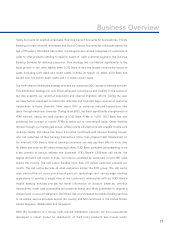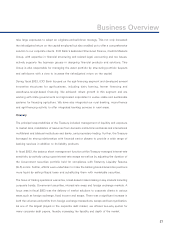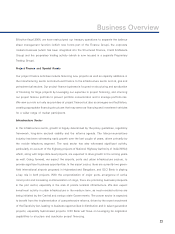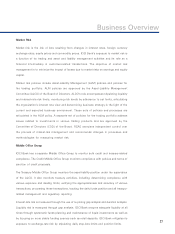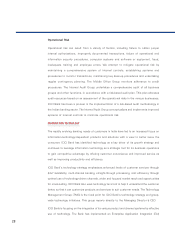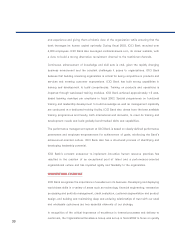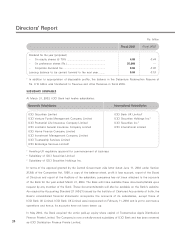ICICI Bank 2003 Annual Report Download - page 29
Download and view the complete annual report
Please find page 29 of the 2003 ICICI Bank annual report below. You can navigate through the pages in the report by either clicking on the pages listed below, or by using the keyword search tool below to find specific information within the annual report.
27
Business Overview
Market Risk
Market risk is the risk of loss resulting from changes in interest rates, foreign currency
exchange rates, equity prices and commodity prices. ICICI Bank’s exposure to market risk is
a function of its trading and asset and liability management activities and its role as a
financial intermediary in customer-related transactions. The objective of market risk
management is to minimize the impact of losses due to market risks on earnings and equity
capital.
Market risk policies include Asset-Liability Management (ALM) policies and policies for
the trading portfolio. ALM policies are approved by the Asset-Liability Management
Committee (ALCO) of the Board of Directors. ALCO’s role encompasses stipulating liquidity
and interest-rate risk limits, monitoring risk levels by adherence to set limits, articulating
the organization’s interest rate view and determining business strategy in the light of the
current and expected business environment. These sets of policies and processes are
articulated in the ALM policy. A separate set of policies for the trading portfolio address
issues related to investments in various trading products and are approved by the
Committee of Directors (COD) of the Board. RCAG exercises independent control over
the process of market-risk management and recommends changes in processes and
methodologies for measuring market risk.
Middle Office Group
ICICI Bank has a separate Middle Office Group to monitor both credit and treasury-related
compliance. The Credit Middle Office Group monitors compliance with policies and terms of
sanction of credit proposals.
The Treasury Middle Office Group monitors the asset-liability position under the supervision
of the ALCO. It also monitors treasury activities, including determining compliance with
various exposure and dealing limits, verifying the appropriateness and accuracy of various
transactions, processing these transactions, tracking the daily funds position and all treasury-
related management and regulatory reporting.
Interest-rate risk is measured through the use of re-pricing gap analysis and duration analysis.
Liquidity risk is measured through gap analysis. ICICI Bank ensures adequate liquidity at all
times through systematic funds planning and maintenance of liquid investments as well as
by focusing on more stable funding sources such as retail deposits. ICICI Bank mitigates its
exposure to exchange-rate risk by stipulating daily stop-loss limits and position limits.


